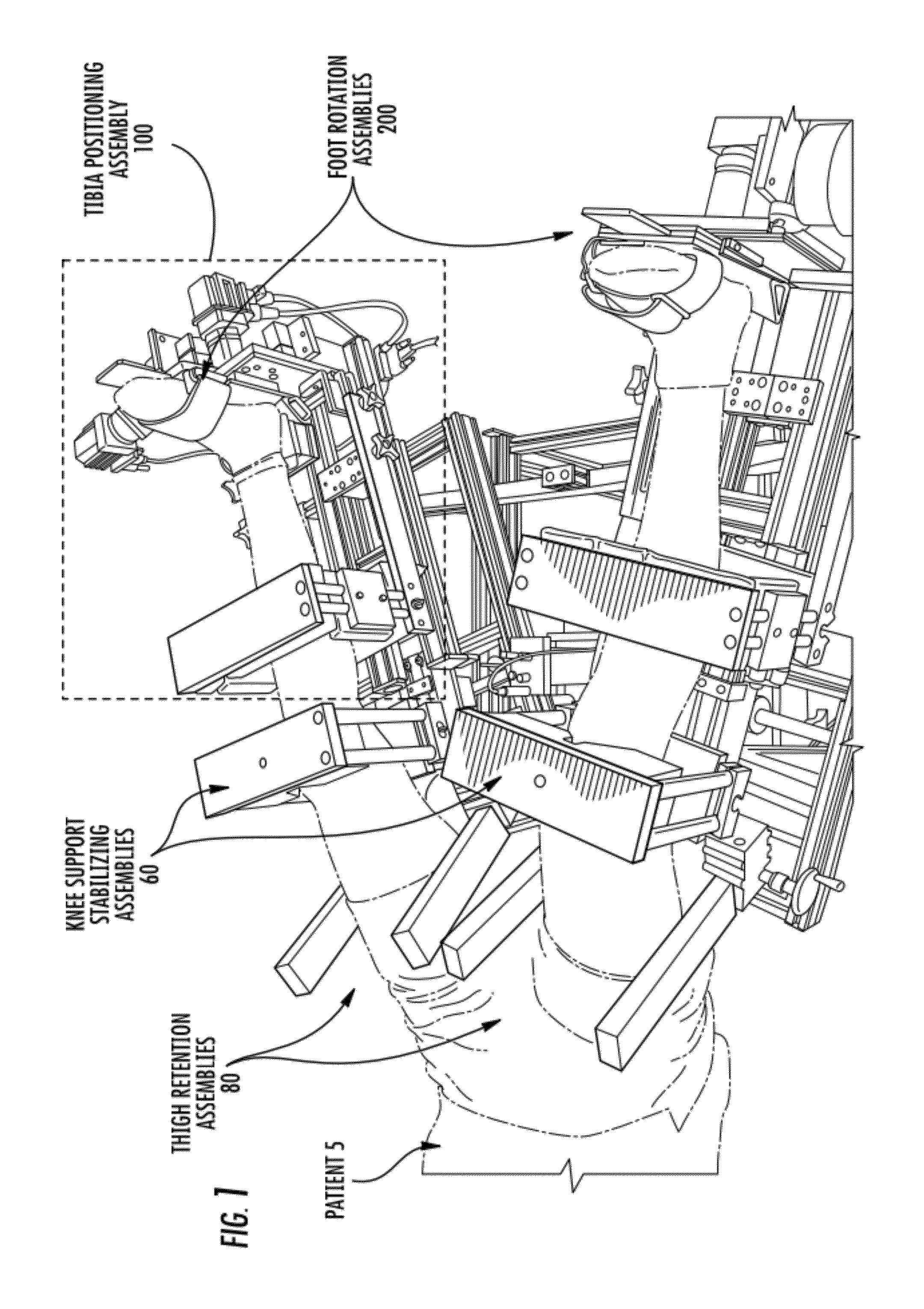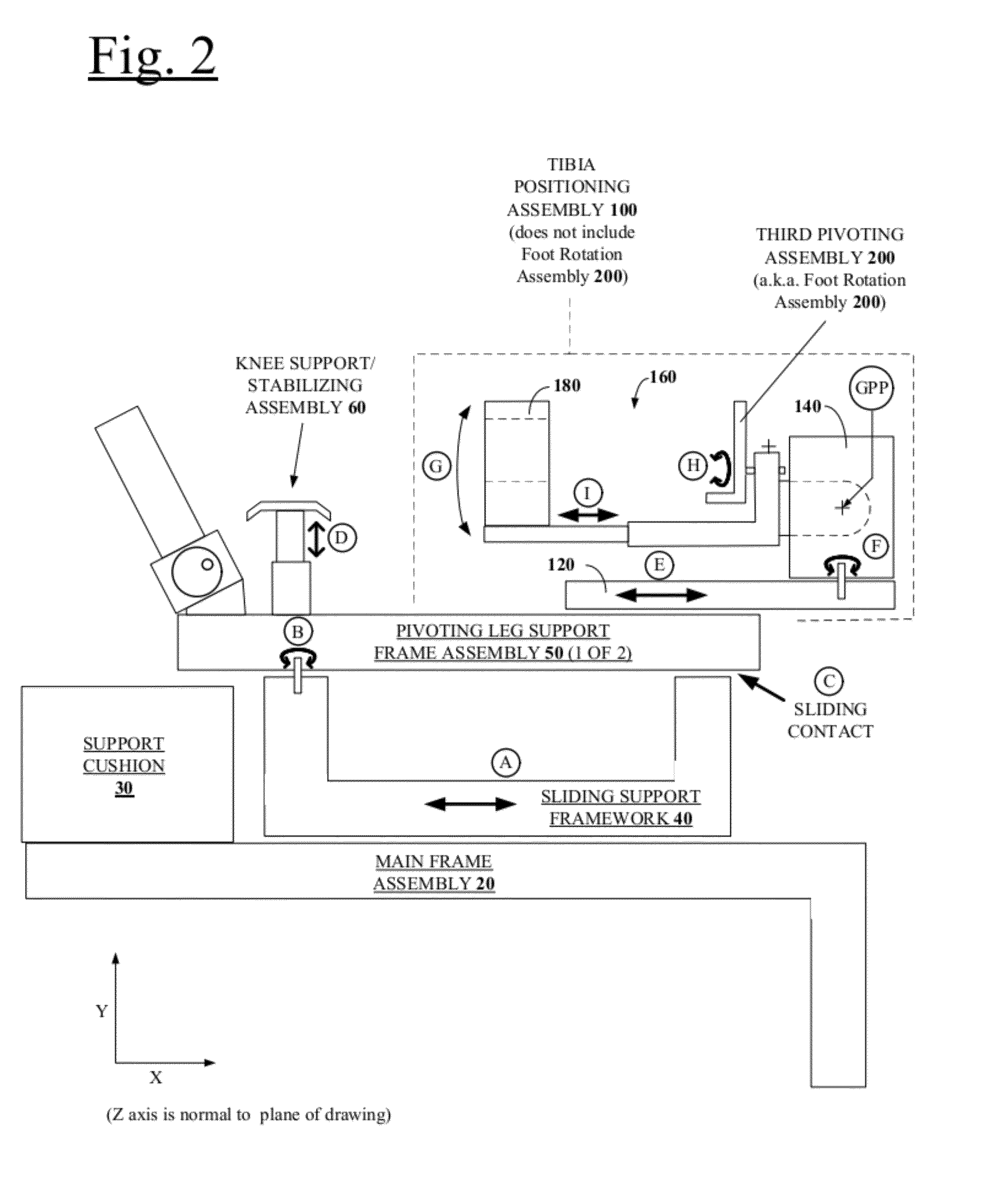Robotic Knee Testing Device, Subjective Patient Input Device and Methods for Using Same
a robot knee and knee technology, applied in the direction of application, radiation beam directing means, person identification, etc., can solve the problems of increasing or decreasing abnormal or pathological condition in the knee, and unable to quantify the increase or decrease in the ‘joint play’ or knee motion with limited success,
- Summary
- Abstract
- Description
- Claims
- Application Information
AI Technical Summary
Problems solved by technology
Method used
Image
Examples
Embodiment Construction
I. General Overview
[0070]The present inventions now will be described more fully hereinafter with reference to the accompanying drawings, in which some, but not all embodiments of the inventions are shown. Indeed, these inventions may be embodied in many different forms and should not be construed as limited to the embodiments set forth herein; rather, these embodiments are provided so that this disclosure will satisfy applicable legal requirements. Like numbers refer to like elements throughout.
[0071]Generally described, various embodiments of the present invention provide robotically controlled devices and methods for evaluating the knee, although other joints and limbs can likewise be evaluated such as the elbow and arm. In one aspect of the invention, devices and methods are provided, which apply a known torque to the lower leg of a user and monitor the reaction to this torque at the knee. Such devices and methods may be generally configured to control the direction, rate, and m...
PUM
 Login to View More
Login to View More Abstract
Description
Claims
Application Information
 Login to View More
Login to View More - R&D
- Intellectual Property
- Life Sciences
- Materials
- Tech Scout
- Unparalleled Data Quality
- Higher Quality Content
- 60% Fewer Hallucinations
Browse by: Latest US Patents, China's latest patents, Technical Efficacy Thesaurus, Application Domain, Technology Topic, Popular Technical Reports.
© 2025 PatSnap. All rights reserved.Legal|Privacy policy|Modern Slavery Act Transparency Statement|Sitemap|About US| Contact US: help@patsnap.com



